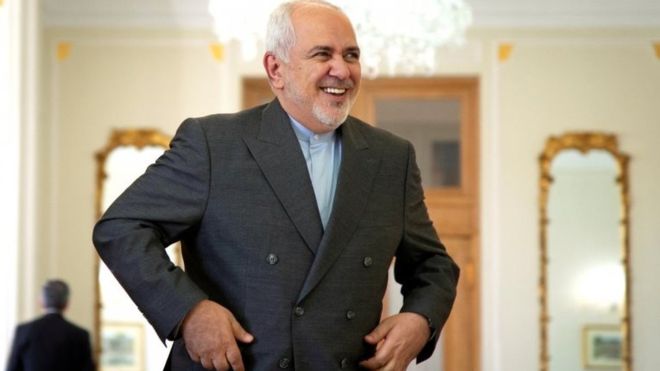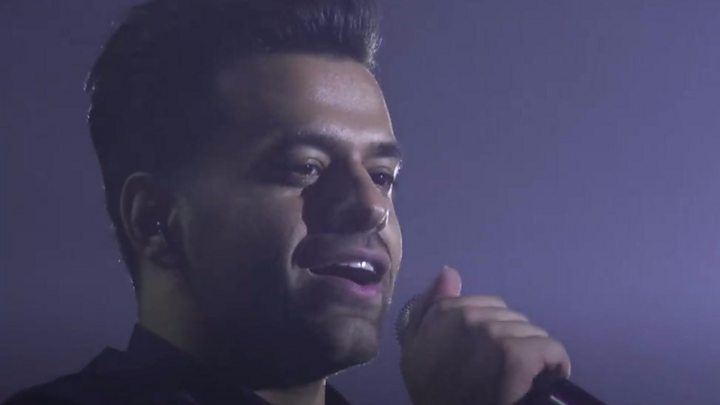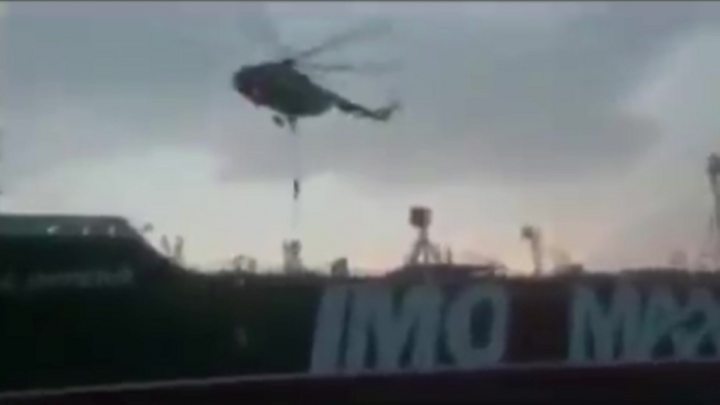Oil Tankers’ Tracking Signals Are Vanishing in the Strait of Hormuz

Oil tanker owners are finding a way to reduce the risks of navigating the Strait of Hormuz, the world’s most important — and lately most dangerous — energy chokepoint: vanish from global tracking systems.
Copying from Iran’s own playbook, at least 20 ships turned off their transponders while passing through the strait this month, tanker-tracking data compiled by Bloomberg show. Others appear to have slightly altered their routes once inside the Persian Gulf, sailing closer than usual to Saudi Arabia’s coast en route to ports in Kuwait or Iraq.
Before the latest increase in tensions with Iran, ships were more consistent about signaling their positions as they passed through a waterway that handles a third of seaborne petroleum. Once inside the Gulf, shipping routes took them fairly close to the Iranian coast, skirting the offshore South Pars/North gas field shared by Iran and Qatar. Most still do, but a growing number appear to be trying something new.
It’s little surprise that ships are doing everything possible to minimize risk. The Gulf region has witnessed a spate of vessel attacks, tanker seizures and drone shoot-downs since May, all against the backdrop of U.S. sanctions aimed at crippling Iran. War-risk insurance soared for tanker owners seeking to load cargoes in the region.
Two British warships are now situated in the waters around Hormuz where they were recently escorting the nation’s ships. The U.S. 5th Fleet also permanently operates in the region. On Wednesday, the Norwegian Maritime Authority advised the country’s flagged vessels to minimize transit time in Iran’s territorial waters. Tanker captains have become increasingly nervous about the risks of getting caught up in the conflict.
At least 12 vessels loaded in Saudi Arabia and shut off their transponders while passing through the strait within the past month. They include the supertanker Kahla, which turned off its signal on July 20 before passing through the strait. It reappeared two days later on the other side of the waterway.
Likewise, at least eight vessels that loaded in Iraq and Kuwait went dark while leaving the Strait of Hormuz. A vessel shipping from the U.A.E. also dropped off tracking systems.
The apparent shutdown of signals coincides with a slew of disruptions in the region. On July 11, the Royal Navy intervened to prevent Iran from impeding a tanker operated by BP Plc from passing through Hormuz. Three days later, Iran seized a Panama-flagged vessel. On July 19, Iranian forces took control of a British-flagged tanker in retaliation for similar action by U.K. authorities. The vessel, the Stena Impero, remains impounded.











 Gerald Butt, Petroleum Economist Two years after the economic and political boycott on Qatar, the Gulf state is pressing on with LNG expansion plans. Qatar Petroleum (QP) in April asked three joint ventures to bid for the main engineering, procurement and construction (EPC) contract for four mega-LNG trains, each with 8.8mn t/yr capacity, and related facilities. A month later it asked firms to bid to carry out EPC work for LNG storage and loading facilities. QP announced in 2017, after the boycott was imposed, that it planned to increase LNG output capacity from 77mn t/yr to 100mn t/yr, by producing more gas from the vast offshore North field. The following year it unveiled an even more ambitious plan — to target capacity of 110mn t/yr. And despite the fact that there is no end to the political dispute that has destroyed the credibility of the Gulf Cooperation Council, Qatar is not looking back. The consortiums competing for the contracts to build the mega-trains are: Chiyoda and Technip; JGC Corporation and Hyundai Engineering and Construction; and Saipem, McDermott and CTCI Corporation. The announcement of the EPC contract is expected in January 2020, with work to be completed by 2024. Qatar believes that the new development will come on stream just as demand for LNG will start to exceed supply. McDermott International has been given the EPC role for eight new offshore jackets in the North field. Onshore site preparation for the four LNG trains at Ras Laffan is being carried out by Consolidated Contractors Company and Teyseer Trading and Contracting Company. Chiyoda is completing the FEED work for the onshore facilities, and further contract awards related to the expansion project are expected in the coming months.
Gerald Butt, Petroleum Economist Two years after the economic and political boycott on Qatar, the Gulf state is pressing on with LNG expansion plans. Qatar Petroleum (QP) in April asked three joint ventures to bid for the main engineering, procurement and construction (EPC) contract for four mega-LNG trains, each with 8.8mn t/yr capacity, and related facilities. A month later it asked firms to bid to carry out EPC work for LNG storage and loading facilities. QP announced in 2017, after the boycott was imposed, that it planned to increase LNG output capacity from 77mn t/yr to 100mn t/yr, by producing more gas from the vast offshore North field. The following year it unveiled an even more ambitious plan — to target capacity of 110mn t/yr. And despite the fact that there is no end to the political dispute that has destroyed the credibility of the Gulf Cooperation Council, Qatar is not looking back. The consortiums competing for the contracts to build the mega-trains are: Chiyoda and Technip; JGC Corporation and Hyundai Engineering and Construction; and Saipem, McDermott and CTCI Corporation. The announcement of the EPC contract is expected in January 2020, with work to be completed by 2024. Qatar believes that the new development will come on stream just as demand for LNG will start to exceed supply. McDermott International has been given the EPC role for eight new offshore jackets in the North field. Onshore site preparation for the four LNG trains at Ras Laffan is being carried out by Consolidated Contractors Company and Teyseer Trading and Contracting Company. Chiyoda is completing the FEED work for the onshore facilities, and further contract awards related to the expansion project are expected in the coming months.  Saad al-Kaabi Minister of Energy and Chairman of QP New LNG carriers To cater for the North Field expansion and Qatar’s offtake from the Golden Pass LNG export project in the US, QP in April issued an invitation to tender for the construction of LNG carriers. QP CEO Saad al-Kaabi says the initial order would be to “deliver 60 LNG carriers in support of the planned production expansion, with a potential to exceed 100 new carriers over the next decade”. 110mn t/yr — Qatar’s planned LNG capacity
Saad al-Kaabi Minister of Energy and Chairman of QP New LNG carriers To cater for the North Field expansion and Qatar’s offtake from the Golden Pass LNG export project in the US, QP in April issued an invitation to tender for the construction of LNG carriers. QP CEO Saad al-Kaabi says the initial order would be to “deliver 60 LNG carriers in support of the planned production expansion, with a potential to exceed 100 new carriers over the next decade”. 110mn t/yr — Qatar’s planned LNG capacity  Roudi Baroudi Energy Economist During 2018, Qatar maintained its position as the largest exporter of LNG, with 28pc of global market share, according to the International Gas Union. However, with other countries increasing capacity, Qatar’s share has been falling. Australia has now overtaken Qatar as the biggest producer — but will be nudged out of that spot when the Ras Laffan expansion is complete. Call for talks In the meantime, Qatar continues to call for talks to end the political dispute with its neighbours, but they appear to have no interest in ending the boycott. “The countries besieging Qatar know it is ready to sit down at the negotiating table, whether under the aegis of the GCC or any other set-up,” says Roudi Baroudi, a Doha-based energy consultant. “Qatari officials remain hopeful that their counterparts will soon change course and join the search for sovereign, fair and workable solutions.” For now at least, Qatar is prepared to carry on regardless — without undue concern. The IMF said in late 2018 that “significant fiscal and external buffers have enabled Qatar to successfully absorb the adverse shocks from the 2014-16 decline in oil prices and the diplomatic rift. We anticipate overall real GDP growth of 3.1pc in 2019, with still robust non-hydrocarbon growth and recovery in oil and gas production.”
Roudi Baroudi Energy Economist During 2018, Qatar maintained its position as the largest exporter of LNG, with 28pc of global market share, according to the International Gas Union. However, with other countries increasing capacity, Qatar’s share has been falling. Australia has now overtaken Qatar as the biggest producer — but will be nudged out of that spot when the Ras Laffan expansion is complete. Call for talks In the meantime, Qatar continues to call for talks to end the political dispute with its neighbours, but they appear to have no interest in ending the boycott. “The countries besieging Qatar know it is ready to sit down at the negotiating table, whether under the aegis of the GCC or any other set-up,” says Roudi Baroudi, a Doha-based energy consultant. “Qatari officials remain hopeful that their counterparts will soon change course and join the search for sovereign, fair and workable solutions.” For now at least, Qatar is prepared to carry on regardless — without undue concern. The IMF said in late 2018 that “significant fiscal and external buffers have enabled Qatar to successfully absorb the adverse shocks from the 2014-16 decline in oil prices and the diplomatic rift. We anticipate overall real GDP growth of 3.1pc in 2019, with still robust non-hydrocarbon growth and recovery in oil and gas production.”  In Baroudi’s view, “while Qataris continue to face illegal and discriminatory measures attached to the commercial blockade, their country has the wherewithal to sustain the current situation for as long as it takes”.
In Baroudi’s view, “while Qataris continue to face illegal and discriminatory measures attached to the commercial blockade, their country has the wherewithal to sustain the current situation for as long as it takes”. 